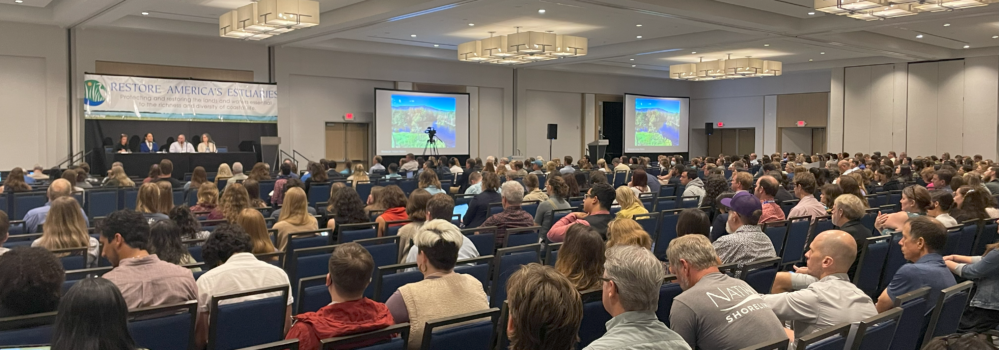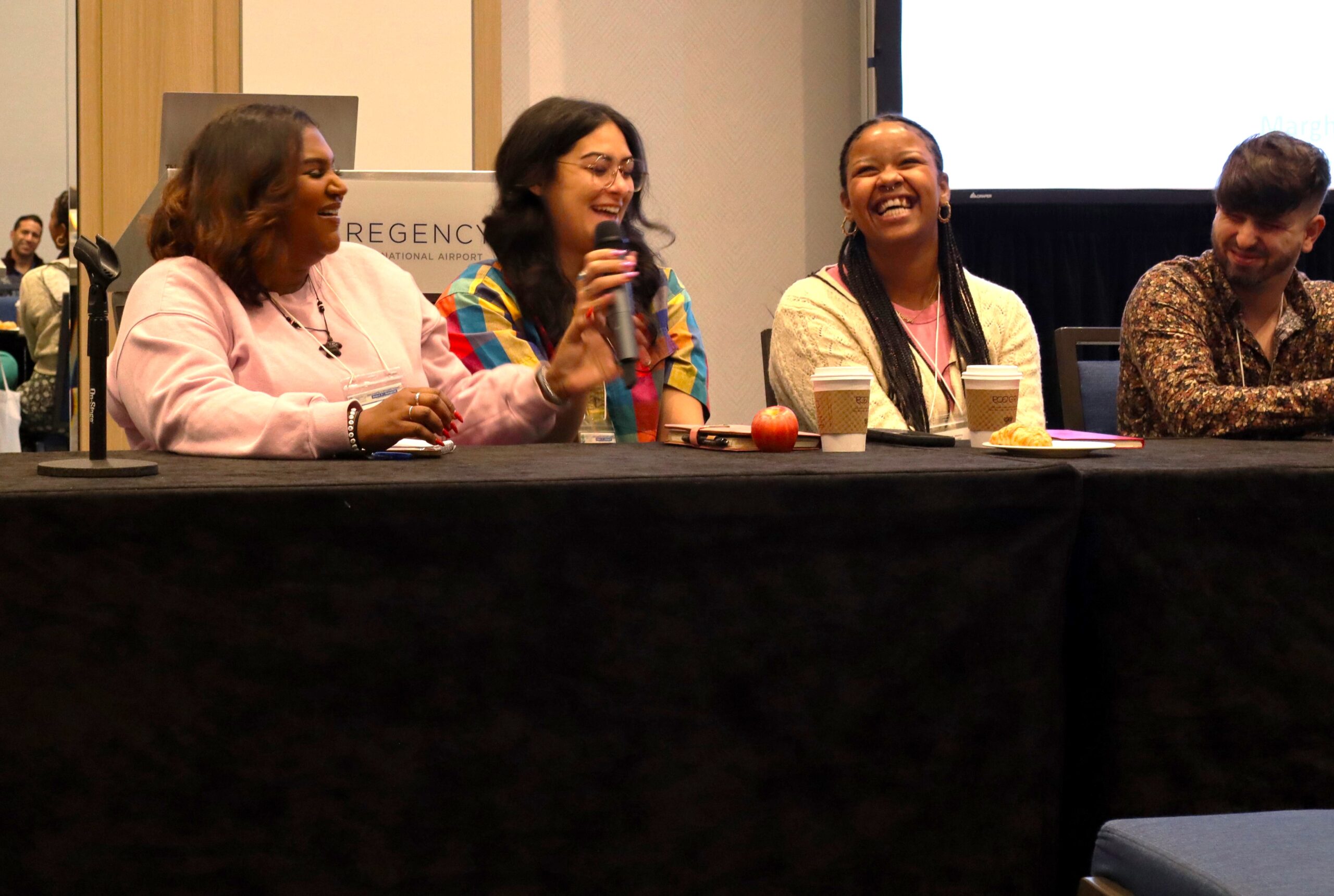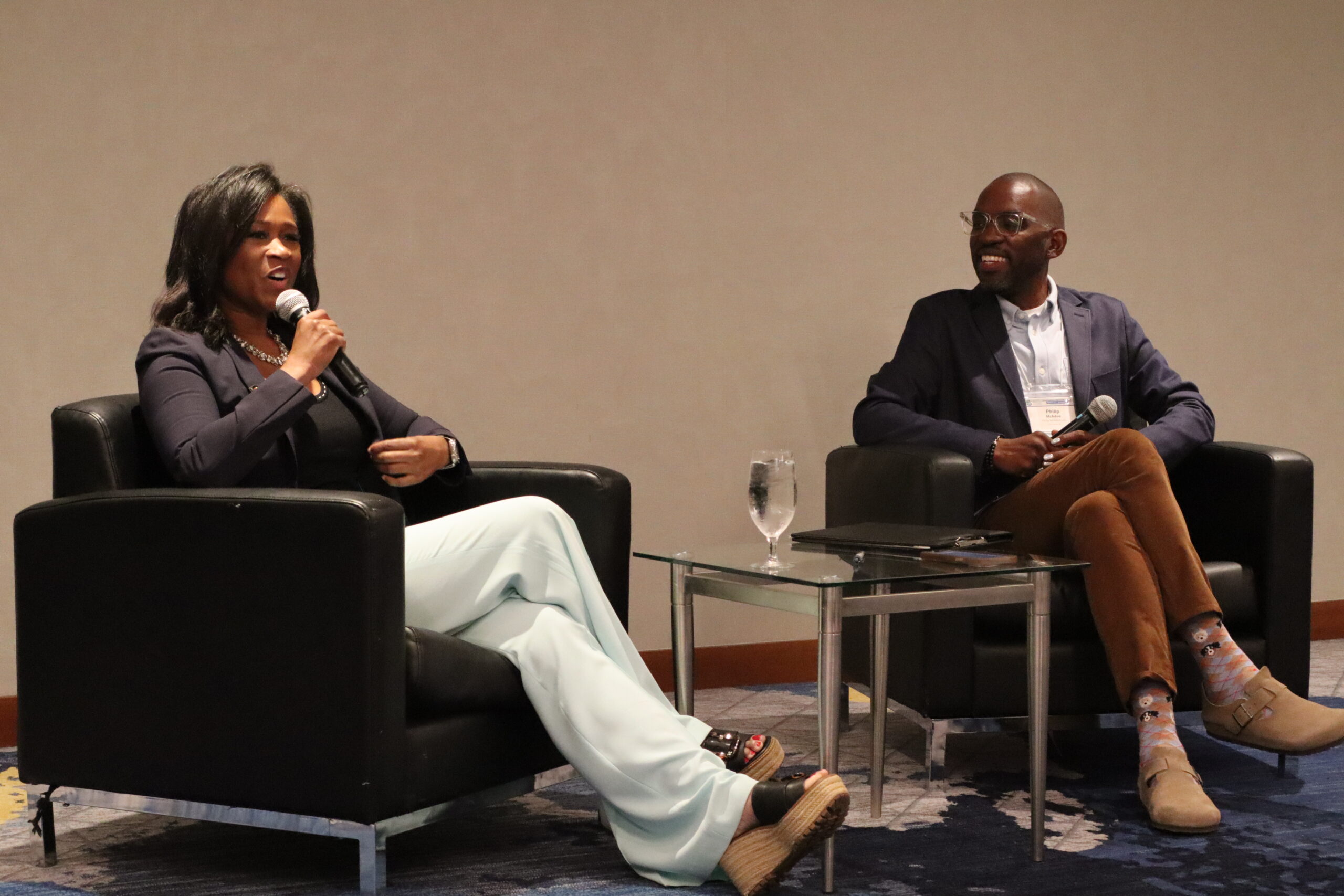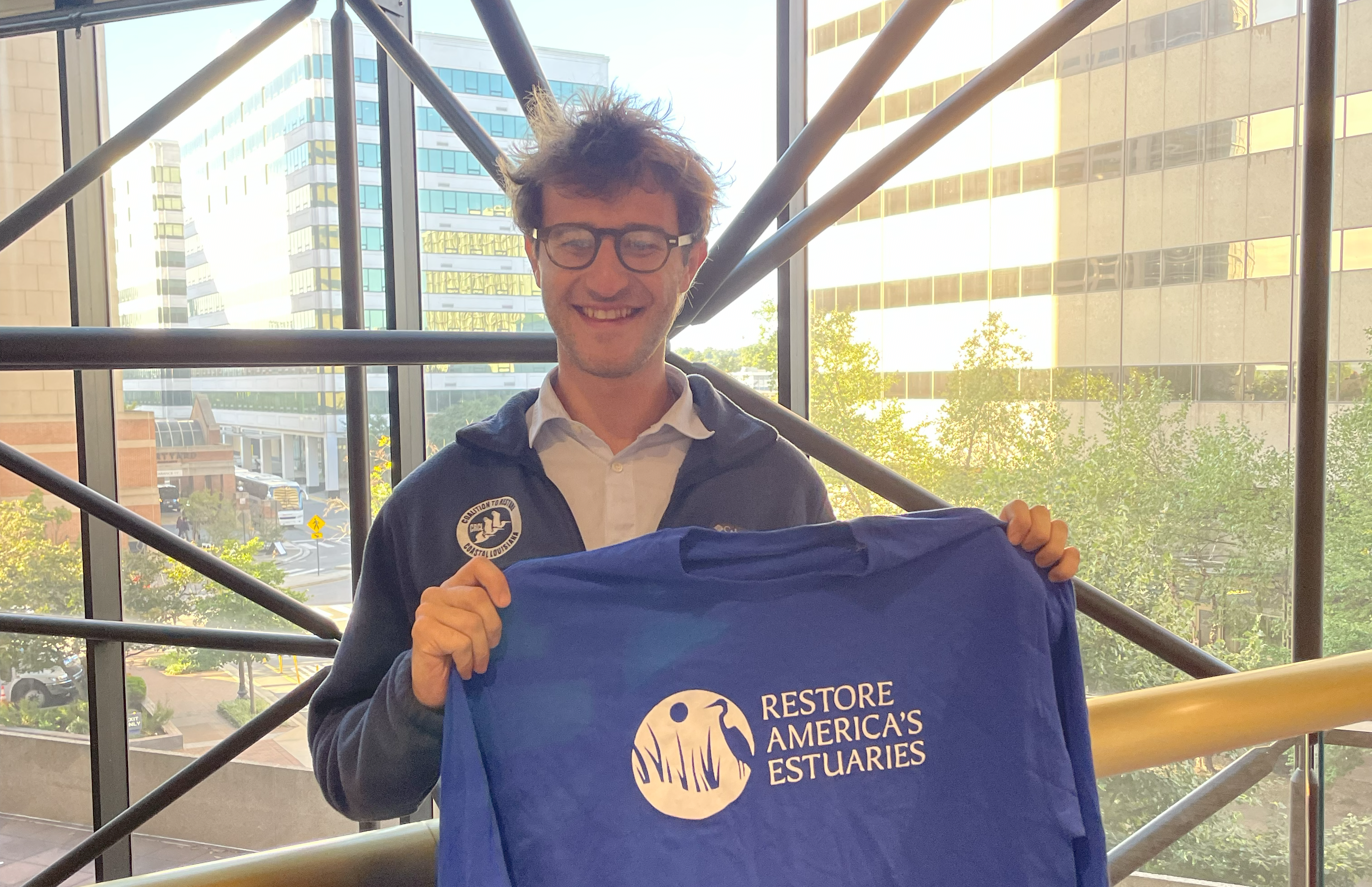
Restore America’s Estuaries 2024 Coastal & Estuarine Summit Draws to Close
Summit brings together over 1100 to learn about efforts to protect coasts, share accomplishments, and forge partnerships
October 17, 2024 – ARLINGTON, VA
Restore America’s Estuaries’ 12th Coastal & Estuarine Summit, co-hosted by the Chesapeake Bay Foundation (CBF) came to an end on Thursday, October 10, capping five days of over 100 sessions featuring 600 unique speakers, covering a range of scientific, engineering, policy, advocacy, and education backgrounds. Over 500 unique organizations were in attendance solidifying the Coastal & Estuarine Summit as one of the largest gatherings of leaders in coastal conservation.
The Summit’s theme of ‘Capitalizing on Our Coasts’ was emphasized throughout the week to remind attendees, that while our coasts need our protection, they offer countless benefits in return. Throughout the discussions, the impending landfall of Hurricane Milton remained an ongoing topic that impacted attendance and gave speakers and discussants a timely proof point of how extreme weather caused by climate change impacts their work.

Field Sessions- Participants got up close and personal with Chesapeake Bay restoration during the five field sessions that spread throughout the region. From a tour of Poplar Island’s beneficial reuse project to the Chesapeake Bay Foundation’s Oyster Restoration Center and a canoe trip of Black Walnut Creek, attendees spent the day exploring the wonders of the nation’s largest estuaries. Additional field sessions focused on the water closer to the nation’s capital during a tour of Great Falls Park and on a Potomac River educational boat tour led by CBF, both designed to highlight the challenges and opportunities of one of the largest tributaries of Chesapeake Bay running through the heart of Washington D.C.
Monday Plenary– Daniel Hayden, RAE President and CEO welcomed attendees to the Summit , acknowledging the Tribal lands that the Summit was hosted on. Following his remarks, Alison Prost, RAE Board Chair and VP for Environmental Protection and Restoration at CBF and Jainey K. Bavishi, Assistant Secretary of Commerce for Oceans and Atmosphere and Deputy Administrator of NOAA each provided updates on the ongoing efforts to restore our coasts in the Chesapeake Bay and across the country.

NOAA and the American Fisheries Society honored Damon Moore with the 2024 Dr. Nancy Foster Habitat Conservation Award. Damon is a restoration ecologist with more than 20 years of experience completing high-impact projects in southwest Florida.
Closing out the plenary, a panel of coastal leaders from Tribal Nations around Chesapeake Bay shared their thoughts on “Tribal Efforts to Protect and Restore the Chesapeake,” and created a platform for tribal voices to speak about models for protecting and restoring ecosystems on tribal lands and partnership opportunities for economic development and conservation featuring:
- Nikki Bass, Tribal Citizen of the Nansemond Indian Nation
- Dana Adkins, Tribal Environmental Director of the Chickahominy Indian Tribe
- Christy Everett, Director of the Hampton Bay office of the Chesapeake Bay Foundation
- Melissa Ehrenreich, Executive Director of the Indigenous Conservation Council of the Chesapeake Bay
If you are interested in learning more about the panel and the information shared, we encourage those who may not be part of a Tribal Nation but are interested in building stronger partnerships with Tribal Nations and Indigenous organizations to visit the Indigenous Conservation Council for the Chesapeake Bay (ICC) list of resources designed to inspire learning, growth, and deeper connections.

Sessions- The 2024 Summit was a success, in large part because of the breadth of the sessions offered by a diverse range of presenters who traveled to Washington D.C. from across the globe, at all stages of their careers, and spanning numerous focus areas of coastal conservation. For three full days, attendees heard from leaders in their focus areas and engaged in thoughtful conversations on how their work was shaping the field. From sessions that focused on environmental justice, habitat protection, coastal relocation and restoration, network models to support infrastructure, site-specific case studies and the role of tribal communities, all aspects of coastal restoration were represented. Sessions included:
Chesapeake Bay Foundation experts explored the Chesapeake Bay’s oyster reef – the largest restoration project in the world with more than 1,500 acres surveyed, approximately 1,000 acres restored and about 400 acres monitored with adaptive management. Panelists contributed lessons on stakeholder engagement, sanctuary site identification and permitting. In addition to leveraging partnerships across the public and non-profit sectors, NOAA’s Geographic Information System (GIS) is monitoring the reef from above with separate sonar technology leveraged to observe the reef floor. The program is on track to achieve the 2014 Chesapeake Bay Watershed Agreement to restore ten tributaries by 2025.

In a session titled Collaboration and Connection in Blue Carbon, the panel honed in on Blue Carbon Economy models. In this panel, the Blue Carbon Inventory Project showed how capacity building and GHG inventories can improve carbon and coastal management in Costa Rica. A data scientist then reinforced the importance of data stewardship in such efforts by encouraging increased availability, scalability and transparency of data, while a non-profit’s blue carbon strategy explained the multi-pillared approach to restoration through sea grass, mangrove and salt marsh programs. Finally, we saw a comparison of tropical seagrass carbon sequestration across four ocean basins and learned that there is more sequestration in restored seagrass in the Gulf of Mexico.

Lunch Programming- RAE was proud to welcome Serena McIlwain, Secretary of the Maryland Department of the Environment for our Tuesday lunch programming to highlight and celebrate the invaluable contributions of BIPOC individuals to environmental advocacy, fostering a dialogue on inclusion, access, and the celebration of diversity in green spaces across our nation. A long-time for environmental justice, Secretary McIlwain discussed the importance of engaging with the community at every step in the process to achieve long-term and community-oriented results.
Day two of programming welcomed Raúl García, Vice President of Policy and Legislation at Earthjustice, Dr. Mel Michelle Lewis (she/they), Vice President of people, Justice, and Cultural Affairs at American Rivers, and Angelo Villagomez, Senior Fellow, American Progress for a panel discussion on the past, present, and future of the environmental movement as it intersects with diversity at each and every step.

Poster Contest– Attendees were asked to vote on the ‘People’s Choice’ poster award, and of the 100+ posters presented, Andrew Ferris,  Native Plants Program Technician, CRCL was selected! Andrew’s poster described a marsh restoration project that the Coalition to Restore Coastal Louisiana, U.S. Fish and Wildlife Service, Glass Half Full and Common Ground Relief implemented in south Louisiana in the summer of 2023. Together, they mobilized nearly 100 volunteers over two days to plant 8100 plugs of Southern bulrush and construct a 100,000-pound berm out of recycled glass sand to protect the area from wave action. The project was a success; data collected from five sites throughout the planting footprint show a positive relationship between the rate of vegetative cover and the amount of sediment accretion in an area over the first year of growth.
Native Plants Program Technician, CRCL was selected! Andrew’s poster described a marsh restoration project that the Coalition to Restore Coastal Louisiana, U.S. Fish and Wildlife Service, Glass Half Full and Common Ground Relief implemented in south Louisiana in the summer of 2023. Together, they mobilized nearly 100 volunteers over two days to plant 8100 plugs of Southern bulrush and construct a 100,000-pound berm out of recycled glass sand to protect the area from wave action. The project was a success; data collected from five sites throughout the planting footprint show a positive relationship between the rate of vegetative cover and the amount of sediment accretion in an area over the first year of growth.

RAE & USACE Partnership– Closing out the final day of the Summit, RAE was excited to formally announce a new partnership with the US Army Corp of Engineers (USACE) Engineering With Nature (EWN) initiative. To advance RAE and EWN’s mutual goal of advancing nature-based solutions, this partnership will disseminate knowledge and foster collaborative opportunities across federal, state and local governments, the private sector, NGOs and academic institutions. “RAE is thrilled to be working closely with the Engineering with Nature initiative to advance nature-based solutions as a part of US Army Corp’s larger efforts,” said Daniel Hayden, President and CEO of RAE. “Healthy coasts and shorelines have the potential to provide solutions to our resiliency challenges but only if we invest in them first.”
Restore America’s Estuaries would like to thank all our sponsors for this year’s Summit, including lead sponsor NOAA, for their continued partnership as well as recognize the behind-the-scenes work of dozens of individuals including the RAE staff, volunteers, and Sound Planning. Finally, we want to thank everyone who attended and made this one of the most successful Summits to date. We look forward to seeing you at our Living Shorelines Tech Transfer Workshop Fall 2025 in Connecticut and at the 2026 Summit, taking place from November 15-19 in downtown San Francisco.
